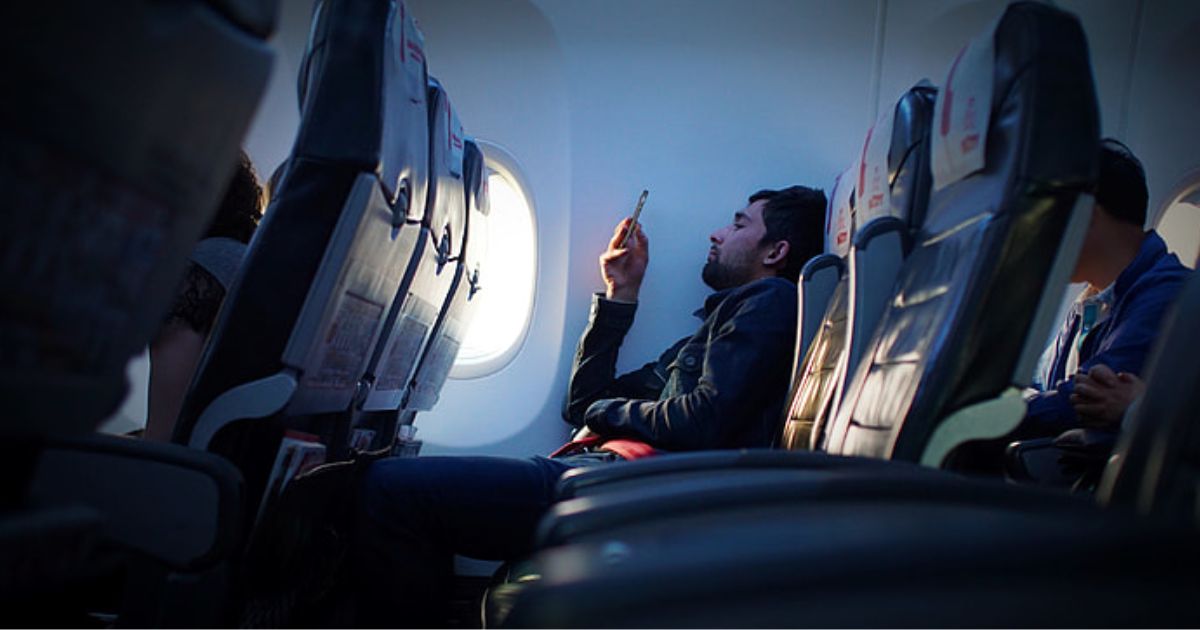Everyone has personal preferences while flying and adapts to different ways to kill time on a flight. Some prefer quiet and doze off for a sweet slumber; other airline passengers kick off their shoes, fight over the armrest, or suddenly recline and enjoy loud music. Some like to read and reflect while looking out at the beautiful sky.
While there’s no judgment on how a passenger enjoys free time while flying, Flight attendants discourage doing this one thing. It’s switching seats after boarding. Once the captain gives the cabin crew the order to manually set the doors and prepare for takeoff, every passenger on a flight is expected to remain in their assigned seat. But some travelers, spotting an empty row or wanting more space, will adamantly want to switch seats.
As per The Mirror, for example, if a passenger initially seated in 28B suddenly falls ill or needs anything in seat 17A, essential time could be lost as the crew tries identifying them. Beyond that, your seat assignment affects the aircraft’s balance. Airlines calculate the total weight and distribution of the flight, including passengers, luggage, cargo, and fuel, to ensure the plane flies safely.
For example, they may assume a male passenger weighs 93kg (14 stone) and a female passenger weighs 75kg (about 11½ stone); they plan the seating arrangement accordingly. If too many passengers are seated in one part of the plane, the aircraft’s performance and handling could be compromised.
In addition, even skilled pilots who have flown hundreds of times rely on those estimated weight distributions. If too many people sit in one section or luggage is unevenly loaded, it can affect how the plane handles, and in rare cases, it could prevent takeoff or lead to a severe injury or accident.
View this post on Instagram
As reported by the outlet, U.S. Federal Aviation Administration mentions that the aircraft weight and balance systems rely on three crucial elements: accurate weighing, maintaining records, and proper loading. Any mistake in these steps undermines the whole system. Incorrect loading decreases aircraft performance in altitude, climb rate, maneuverability, and speed. In extreme cases, it may prevent the plane from taking off—or even completing the flight.”
As per Forbes, on a 2023 KLM flight from Budapest to Amsterdam, passengers were instructed to remain in their assigned seats due to weight and balance concerns. While the announcement stunned the onboard flyers, KLM spokesperson Gerrie Brand said the rule is sometimes announced after the captain tells the crew to do so under special circumstances in a flight.
While a single person switching seats isn’t a major issue, problems can arise when multiple passengers shift from one section of the plane to another, especially from front to back. If one flyer moves with their hand luggage, it’s hard for the crew to deny others since fairness is another airline protocol.
View this post on Instagram
Gerrie Brand explained that moving from aisle to window or from one side to another is usually not an issue. However, when many passengers shift rows, the plane’s centre of gravity may be affected. That’s why people are asked to be completely seated during takeoff and then asked to change positions, go to the washroom, or change seats.
Many might read this article and think these are only theoretical words backed up by some secondary data. Still, as Forbes reported, in October 2023, a JetBlue Airbus A321 tilted backwards while parked at JFK Airport during deplaning, reportedly due to an inconsistent weight shift.
View this post on Instagram
No injuries were reported, but the incident highlights the importance of balance. Therefore, consider what you read the next time you fly and book your tickets early to get the perfect seat. Remember, prevention is better than a cure, always and forever.













